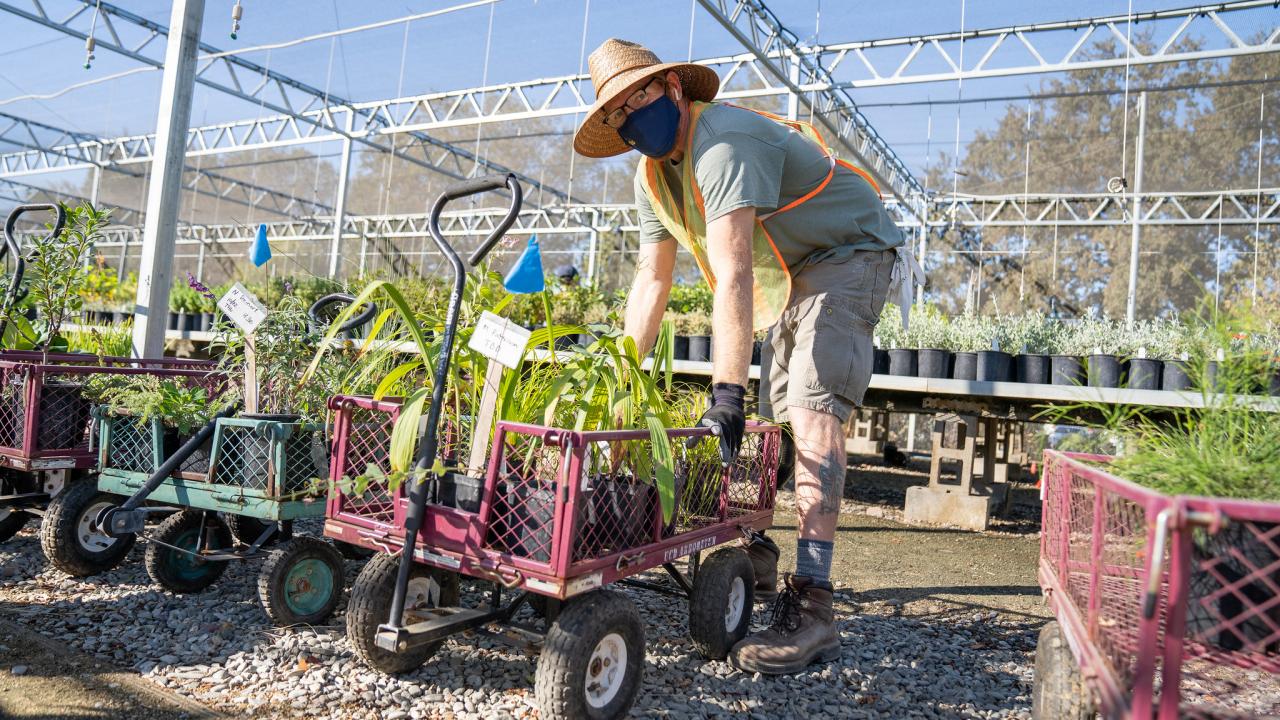
Fall Planting 1-2-3
No leaves? No problem!
At the Arboretum Teaching Nursery, we sell quite a number of herbaceous perennials. Many go dormant in the winter. Those that do may lose their leaves, and plants without leaves — let alone flowers — are often overlooked at nurseries. Fear not!
If you purchased a plant without leaves, know that just like a bulb it is storing up energy to put on a show for you in spring! Be patient and follow the tips here for all your purchases, leaves or no leaves.
So you've brought home some new plants! Here are three tips from Nursery Manager Taylor Lewis to make sure your plants get off to a happy and healthy start.
1. Compost
We deal with lots of heavy soils around here. If you have heavy soil in your garden, be sure to take the time to amend it with compost. Dig an extra wide (rather than deep) hole, amend the soil with compost and fill it back in around your new plant. If you are planting a one gallon container, pretend it's a five gallon size and dig a hole large enough for it. Amending the soil provides the roots of your new plants with the environment they need for a healthy start.
2. Mulch
Add a thick layer of wood chips or other organic material to insulate the soil. Mulch reduces water loss through evaporation, keeps roots cooler, suppresses weeds and reduces soil compaction.
3. Water
If you're unable to plant your new purchases right away, be sure to water them twice a week while they remain in their pots. Once they are in the ground, continue to water them down to the roots once a week or until it starts to rain. After it stops raining, go back to watering the newer plants once a week. This will help your plants transition to their new home.
